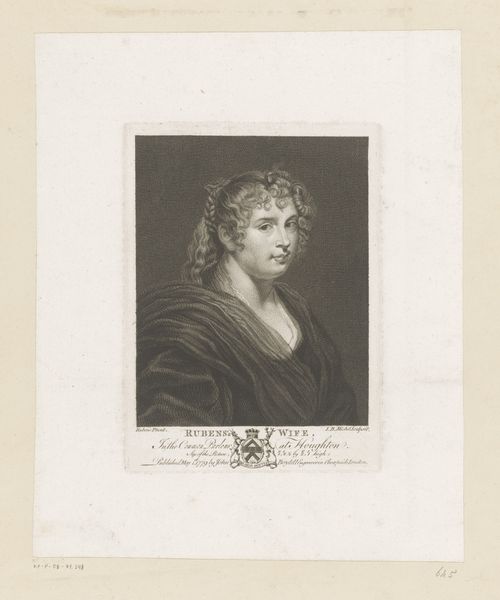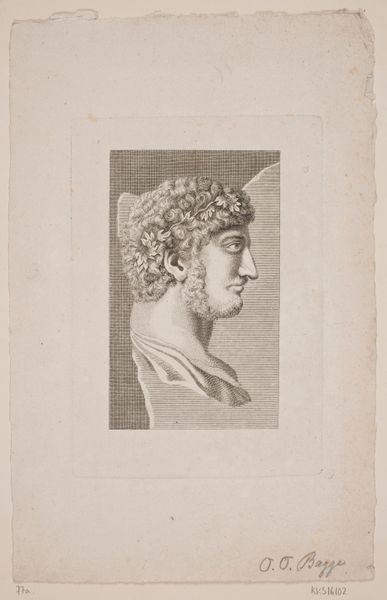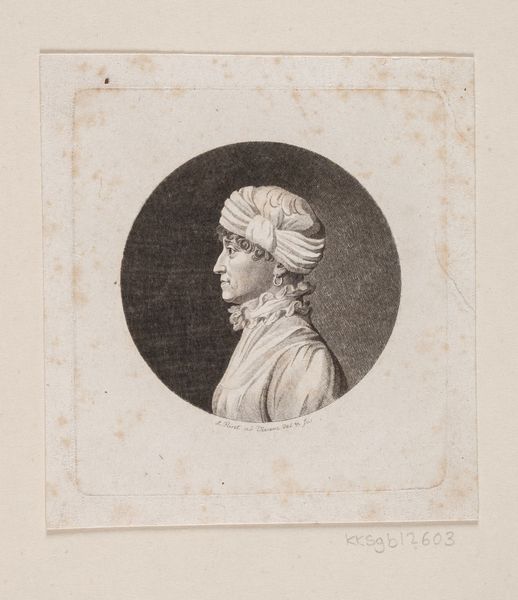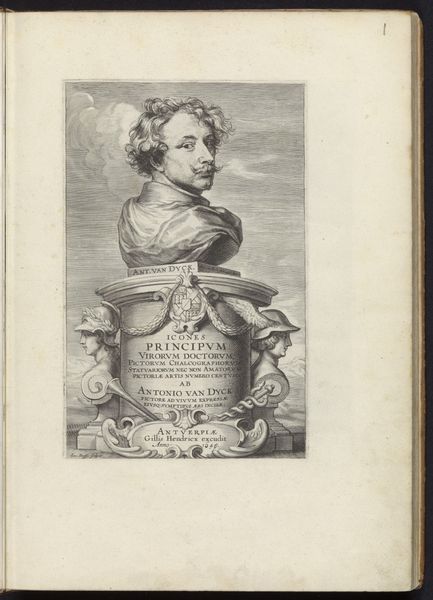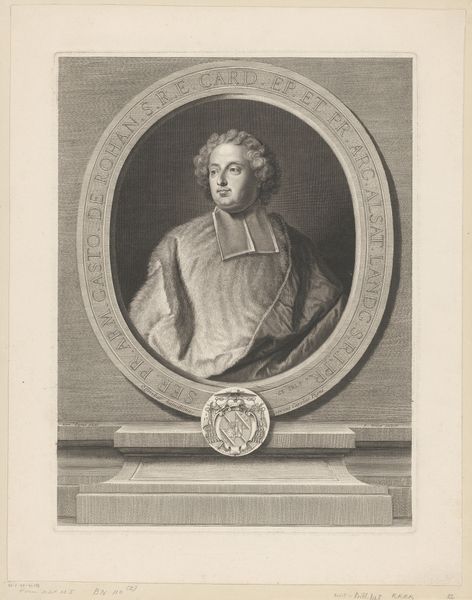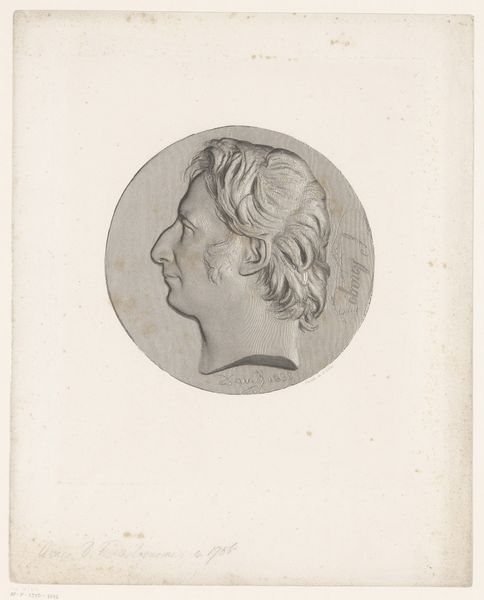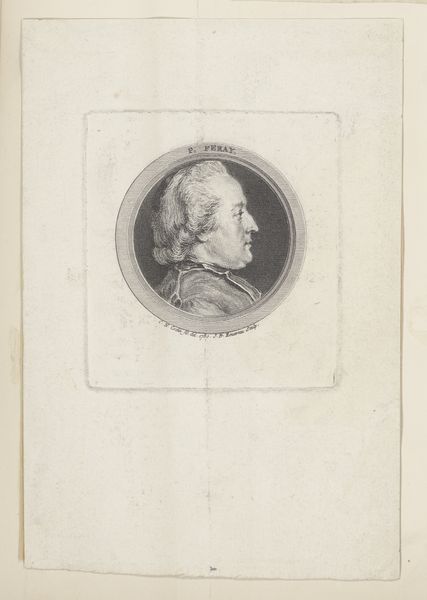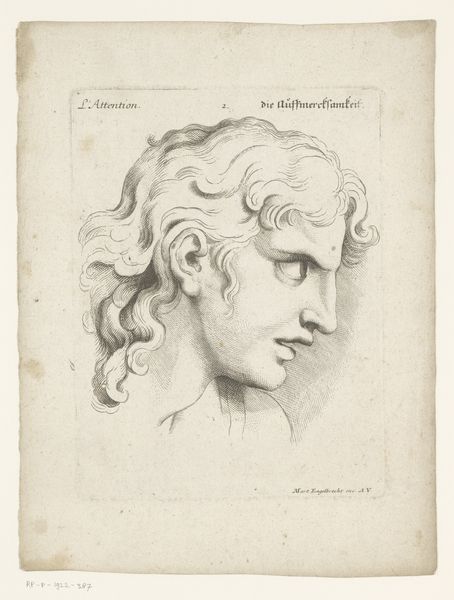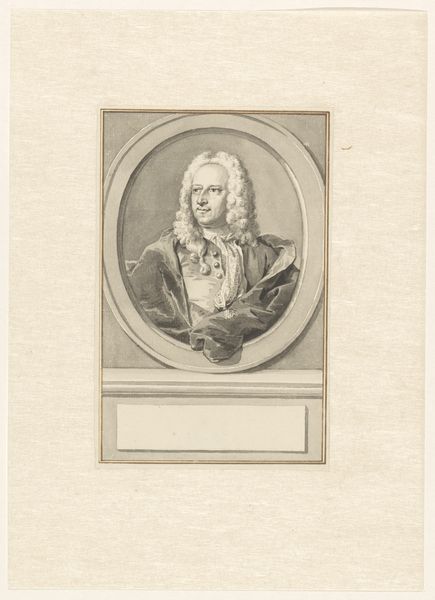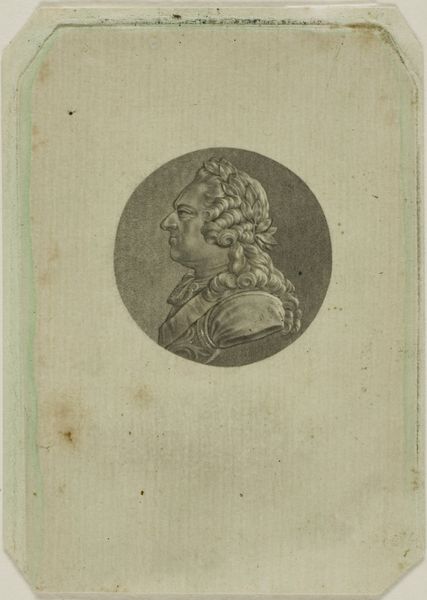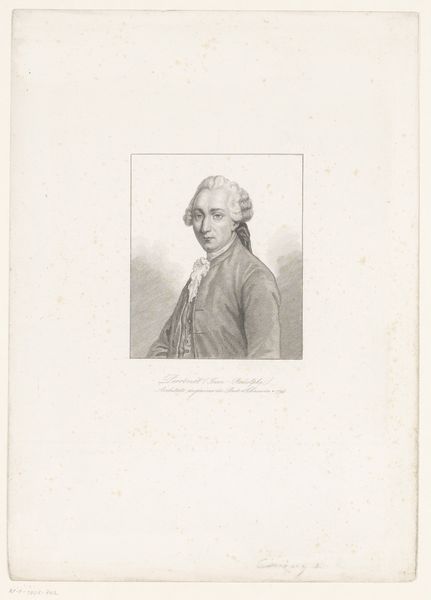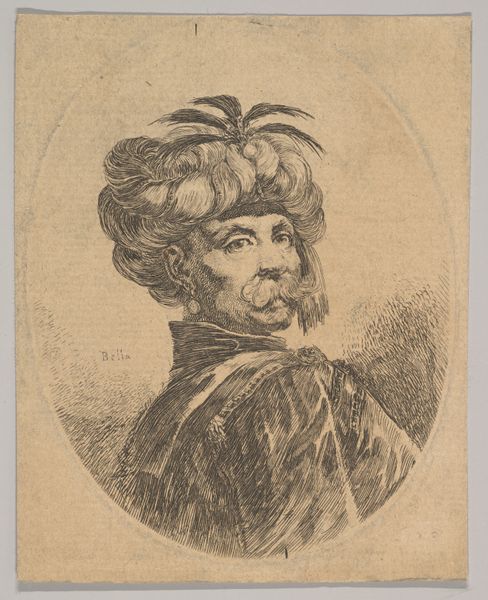
drawing, print, engraving
#
portrait
#
drawing
#
neoclacissism
# print
#
engraving
Dimensions: height 415 mm, width 298 mm
Copyright: Rijks Museum: Open Domain
Robert Blyth produced this print of John Hamilton Mortimer, a historical painter, in the late 18th century. The portrait gives us a glimpse into the artistic circles of the time, and the complex relationship between artists, their patrons, and the institutions that supported them. Mortimer is depicted in a turban, which was a popular fashion in Europe at the time. It was inspired by the Middle East, and served as an exotic and fashionable accessory. We might consider the way the portrait plays with notions of artistic identity. In the 1700s, the Royal Academy was new, but it was already playing a powerful role in defining what was and was not art. Here we see an artist presenting himself as a historical painter. The text at the bottom even reads: 'Historical Painter.' Mortimer’s dress code might be seen as a conscious decision to align himself with a particular tradition, one that looks outside of the immediate culture for inspiration. Understanding the public role of art in 18th century Britain requires close attention to these details. Research into the archives of the Royal Academy, letters, and other documents can shed light on the social conditions that shaped artistic production during that period.
Comments
No comments
Be the first to comment and join the conversation on the ultimate creative platform.
